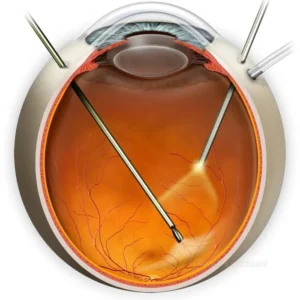Description
Familiarity with Treatment
Balloon sinuplasty is a minimally invasive procedure used to treat chronic rhinosinusitis (CRS) and other sinus conditions. It involves the use of a small, flexible balloon catheter that is inserted into the sinuses and inflated to open up the blocked sinus ostia. This procedure aims to improve sinus drainage and alleviate symptoms associated with chronic sinusitis, such as nasal congestion, facial pain, and pressure.
Procedure
The procedure for balloon sinuplasty typically involves the following steps:
- Anesthesia: The procedure may be performed under local or general anesthesia, depending on the patient’s specific needs and the extent of the treatment.
- Balloon Insertion and Inflation: A small balloon catheter is inserted into the affected sinuses and gently inflated to widen the sinus openings and restore normal drainage.
- Sinus Drainage Improvement: The inflated balloon helps to reshape and widen the sinus passages, promoting better airflow and drainage.
- Wound Closure: Once the necessary corrections are made, the balloon catheter is removed, and the sinuses are left to heal naturally without the need for external sutures.
Who is it Suitable For?
Balloon sinuplasty may be particularly beneficial for patients with chronic rhinosinusitis, recurrent sinus infections, headaches around the eyes, chronic nasal problems, and difficulty breathing through the nose. It is generally recommended for individuals who have had their sinus problems diagnosed early and may be effective for some, though not all, of their sinuses.
Who is it Not Suitable For?
Balloon sinuplasty may not be suitable for individuals with certain medical conditions that increase surgical risks or those who are unable to undergo the necessary postoperative care. A thorough evaluation by a healthcare provider is necessary to determine the suitability of the procedure for each individual.
Advantages
- Minimally Invasive: Balloon sinuplasty is a minimally invasive procedure that is associated with fewer adverse side effects than traditional sinus surgery.
- Improved Sinus Drainage: The procedure aims to improve sinus drainage by gently opening up the blocked sinus ostia, which can alleviate symptoms and improve quality of life.
- Quick Recovery: Most patients are able to return to normal activities within 24 hours following balloon sinuplasty, making it a convenient option for those with busy schedules.
Complications
While balloon sinuplasty is generally considered safe and minimally invasive, there are potential complications that may include the need for additional procedures, rest at home for 24 to 48 hours, and the possibility of symptoms recurring. In rare cases, serious adverse events, such as intraoperative cardiac arrest, have been reported, although these are uncommon.
Preoperative Care
Preoperative care for balloon sinuplasty may involve discussions with the healthcare provider to determine the most appropriate anesthesia, as well as instructions for fasting before the procedure. Patients may also receive guidance on managing expectations and potential outcomes.
Postoperative Care
Following balloon sinuplasty, patients are typically provided with specific postoperative care instructions, which may include:
- Nasal Drainage: Most people who have balloon sinuplasty notice some bloody drainage from their noses, which is normal. However, excessive bleeding should be reported to the healthcare provider.
- Recovery Period: Patients may need to rest at home for 24 to 48 hours after the procedure and should follow the recommended steps to help with recovery.
Balloon sinuplasty is a safe and minimally invasive procedure that aims to improve sinus drainage and alleviate symptoms associated with chronic rhinosinusitis.






Reviews
There are no reviews yet.